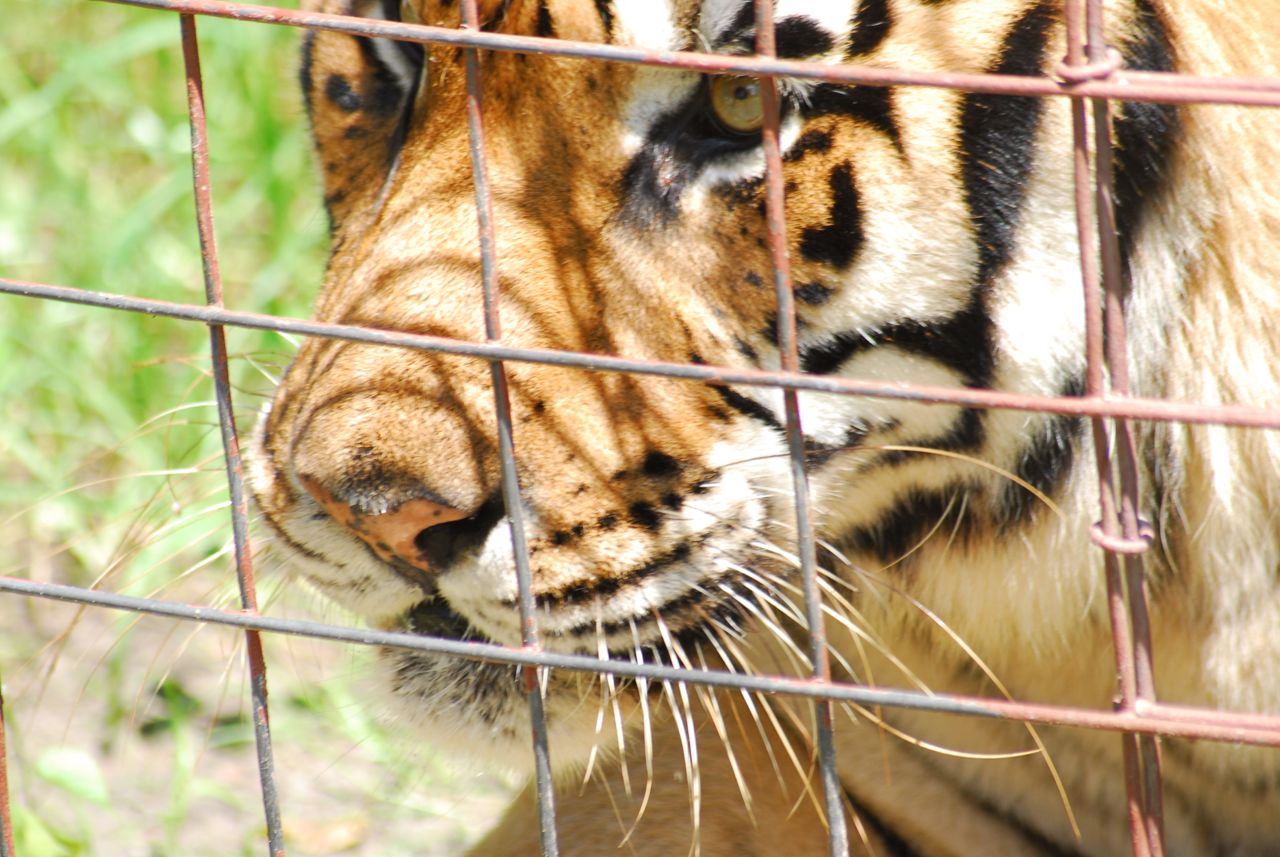Scientists at Stanford University are warning that we’ve entered a mass extinction event not seen since the end of the dinosaurs. Species are dying out as much as 100 times faster than seen between mass extinctions. Habitat loss, pollution, and climate change are all human-caused, and are fueling the fire, and extinctions aren’t limited to the dodo, the Formosan clouded leopard, or the Cape lion. The black rhinoceros was just recently declared extinct, and several hundred other species since 1500 have vanished. More cats are slated to join that list, too. Here are the three most endangered cats in the world.
Endangered Cats: The South China Tiger
When it comes to endangered cats, the South China tiger ranks way up there. They are the most endangered tiger left in the world. According to The Telegraph, in the 1950s, there were 4,000 South China tigers in existence. In 2008, there were less than 100. However, of those 100 (or less), it’s thought that only 10 remained in the wild. The rest lived in zoos.
A breeding program in South Africa may be the key to saving the South China tiger, though. A charity organization, known as Save China’s Tigers, is working to breed these tigers, keep them wild and train them to hunt and take care of themselves, and then release them back into the wild. That’s astonishing, considering that most efforts at conserving endangered cats consist of breeding them for life in a cage. Zoos’ efforts are admirable, but conservation really needs to happen in the wild.
Endangered Cats: The Amur Leopard
Another of the most endangered cats out there is the Amur leopard, which is primarily found in Russia. According to The Telegraph, in 2011, there were less than 50 Amur leopards left in the wild, making them one of the most seriously endangered cats in the world. While they used to live in China, too, as of four years ago, they were considered extinct there.
In the winter, the fur of the Amur leopard can grow to three inches long, to protect them from the cold. One of the biggest dangers they face is from poachers who want those valuable pelts. The World Wildlife Federation says that the forests in which Amur leopards live are easily accessible, and that their pelts are highly prized.
Various conservation efforts have helped to slow the Amur leopard’s decline, including better wildlife management, and relocating leopards from other areas to help prevent inbreeding. That’s the strategy that helped bring the Florida panther back from the brink of extinction, and it may help the Amur leopard, too.
Endangered Cats: The Iberian Lynx
This beautiful, rare cat is another of the most endangered cats, with only two confirmed breeding populations left in southern Spain. The World Wildlife Federation believes that there are less than 150 Iberian lynxes left in the wild, and possibly as few as 84. These numbers are not sufficient to sustain the species, and, like the other critically endangered cats, the Iberian lynx faces extinction.
The main threats to the Iberian lynx are habitat loss, hunting, and car hits. The interesting thing about hunting is that these cats are regarded both as trophies, and as vermin. Hunters want both their fur and their meat, but also view them as a threat to game populations. That’s a major problem with hunting everywhere; the predators are often hunted to the brink because they’re competition for game.
Conservation efforts have slowly started growing the Iberian lynx population again, though, so there is some hope that this beautiful cat won’t become extinct. Seven adults were imported into a new region of Spain, which could help establish a third breeding population.
These endangered cats are but a small percentage of all endangered species, and we humans sit around and bicker about whether allowing species to go extinct is good or bad for the planet – or, more commonly, good or bad for profit. All these animals represent important parts of the ecosystem – an ecosystem that we’re destroying.


